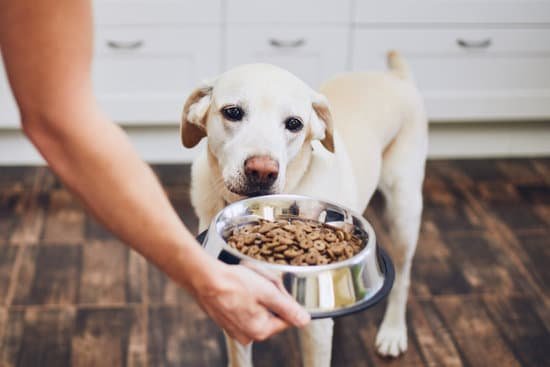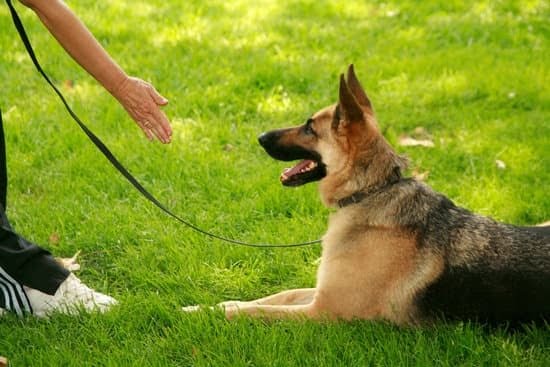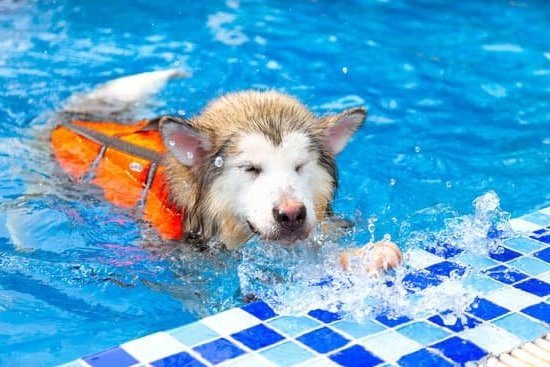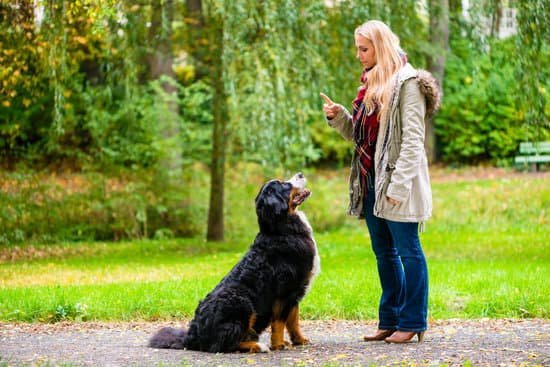Are you struggling with a dog that just won’t stop pulling on your clothes? In this article, we will explore how to train your furry friend to stop this behavior. Understanding why dogs pull on clothes is the first step in addressing this issue and finding effective solutions. By assessing your dog’s behavior and habits, you can tailor training methods that work best for them.
Dogs pulling on clothes can have negative impacts not only on your wardrobe but also on your relationship with your pet. It can be frustrating and even cause damage to your clothing. Positive reinforcement training methods are often effective in teaching dogs to stop pulling on clothes. By consistently rewarding good behavior and redirecting their attention to appropriate toys or activities, you can encourage a change in their behavior.
Consistency and patience are key factors in successfully training your dog to stop pulling on clothes. It may take time for them to learn new behaviors, so it’s important to remain committed to the training process. In some cases, using deterrent methods or tools may be necessary to discourage the behavior. Remember, seeking professional help if the issue persists is always an option in addressing challenging behaviors in our canine companions.
The Negative Impacts of Dogs Pulling on Clothes
Increased Damage to Clothes
When dogs pull on clothes, whether it be due to playfulness or anxiety, they can cause significant damage to your wardrobe. From small tears and snags to completely ruined pieces of clothing, the impact of a dog’s pulling behavior can result in added expenses for replacing or repairing clothing items. This not only affects your budget but also leads to frustration and inconvenience.
Physical Harm to the Dog Owner
Another negative impact of dogs pulling on clothes is the potential for physical harm to the dog owner. When a dog tugs on clothing with force, it can lead to scratches, bruises, or even more serious injuries such as falls or trips.
This is especially concerning when dealing with larger breeds that have more strength and power behind their pulling behavior. By allowing this behavior to continue unchecked, dog owners put themselves at risk of getting hurt while trying to manage their pets.
Reinforcement of Unwanted Behaviors
Allowing a dog to consistently pull on clothes without any corrections or boundaries can reinforce other unwanted behaviors as well. Dogs may develop a sense of entitlement or dominance over the owner by engaging in this behavior. Additionally, they may become overly dependent on the interaction associated with pulling on clothes, making it difficult to redirect their attention elsewhere. Addressing this issue promptly is crucial in preventing further negative impacts on both the dog and the owner.
Assessing Your Dog’s Behavior and Habits
Dogs pulling on clothes can be a frustrating behavior for many pet owners. Understanding why dogs engage in this behavior is essential for effectively addressing it. Some common reasons why dogs pull on clothes include seeking attention, lack of exercise or mental stimulation, boredom, or simply not knowing any better.
To address this behavior, it is crucial to assess your dog’s behavior and habits. Observing when your dog tends to pull on clothes can provide valuable insight into what triggers this behavior. For example, if your dog often pulls on clothes when you are busy or not giving them attention, they may be seeking interaction with you. By understanding the underlying cause of the behavior, you can tailor your training approach accordingly.
One effective method to train your dog to stop pulling on clothes is through positive reinforcement. Whenever your dog refrains from pulling on your clothes and instead engages in appropriate behaviors, such as sitting or playing with their toys, be sure to reward them with praise, treats, or affection. This positive association will encourage them to repeat the desired behavior. Consistency is key when using positive reinforcement training methods to modify your dog’s behavior successfully.
| Reasons for Dogs Pulling on Clothes | Training Approach |
|---|---|
| Seeking attention | Positive reinforcement and interactive play sessions |
| Lack of exercise or mental stimulation | Increase physical activity and introduce mental challenges |
| Boredom | Provide engaging toys and activities to keep them occupied |
Positive Reinforcement Training Methods to Stop Pulling on Clothes
Dogs are naturally curious and playful creatures, but when that curiosity leads them to pull on clothes, it can lead to some negative impacts. Not only can it be frustrating for the owners, but it can also result in torn clothing, scratches, or even injuries. Understanding why dogs exhibit this behavior is crucial in effectively addressing and correcting it. By implementing positive reinforcement training methods, you can teach your furry friend to stop pulling on clothes.
One effective way to train your dog to stop pulling on clothes is through consistency and patience. Positive reinforcement involves rewarding your dog with treats, praise, or toys when they display the desired behavior of not tugging on clothes.
This method encourages your dog to associate good behavior with positive outcomes, making them more likely to repeat it in the future. It is essential to be consistent in rewarding your dog every time they refrain from pulling on clothes and remain patient throughout the training process.
In addition to positive reinforcement, redirecting your dog’s attention to appropriate toys or activities can help curb their desire to pull on clothes. Providing interactive toys or engaging in playtime with your dog can redirect their energy and focus away from tugging at clothing items.
By offering alternative outlets for their playful behavior, you are teaching your dog how to channel their energy in a more suitable manner. Remember that training takes time and dedication, so stay committed to helping your furry companion unlearn the habit of pulling on clothes by using positive reinforcement techniques consistently.
| Training Method | Description |
|---|---|
| Positive Reinforcement | Rewarding good behavior with treats, praise, or toys |
| Redirection | Providing appropriate toys or activities to shift focus away from clothes |
Redirecting Your Dog’s Attention to Appropriate Toys or Activities
Dogs often pull on clothes out of boredom, excitement, or as a way to seek attention. One effective way to address this behavior is by redirecting your dog’s attention to appropriate toys or activities. By providing your dog with engaging and interactive toys, you can help satisfy their need for stimulation and prevent them from resorting to pulling on clothes.
One important aspect of redirecting your dog’s attention is to ensure that the toys or activities you offer are both mentally and physically stimulating. Puzzle toys, chew toys, and interactive games can help keep your dog entertained and engaged, reducing the likelihood of them pulling on clothes out of boredom or excess energy. Additionally, rotating the toys regularly can help maintain your dog’s interest and prevent them from getting bored with the same toys over time.
When redirecting your dog’s attention to toys or activities, it is crucial to make these alternatives more enticing than pulling on clothes. Use positive reinforcement techniques such as praise, treats, or playtime when your dog engages with the toys instead of pulling on clothes. This will help reinforce the desired behavior and encourage your dog to choose the appropriate toys or activities over pulling on clothes in the future.
Overall, redirecting your dog’s attention to appropriate toys or activities requires consistency and patience. It may take time for your dog to learn which behaviors are acceptable and which are not. By providing engaging alternatives and reinforcing positive behaviors, you can effectively train your dog to stop pulling on clothes and redirect their focus towards more suitable outlets for their energy and curiosity.
Consistency and Patience
When it comes to training your dog to stop pulling on clothes, consistency and patience are key factors in achieving success. Dogs, like humans, thrive on routine and repetition. By consistently implementing the training methods outlined in this article, you can effectively communicate to your furry friend what behaviors are acceptable and what behaviors are not.
To ensure consistency in training your dog, consider creating a daily schedule that includes designated times for training sessions. During these sessions, use positive reinforcement techniques such as treats, praise, and rewards to reinforce desired behaviors. Consistency in both timing and approach will help your dog understand what is expected of them when it comes to interacting with clothes.
In addition to consistency, patience is crucial when teaching your dog new behaviors. Remember that learning takes time and every dog is different. Some dogs may catch on quickly while others may require more time and practice. Stay patient and avoid becoming frustrated if progress is slow. Through consistent training efforts and a patient approach, you can effectively teach your dog to stop pulling on clothes while strengthening the bond between you and your furry companion.
- Develop a daily schedule for training sessions
- Use positive reinforcement techniques consistently
- Stay patient and avoid becoming frustrated
Using Deterrent Methods or Tools to Discourage Pulling on Clothes
Dogs pulling on clothes can be a frustrating behavior for pet owners to deal with. In some cases, positive reinforcement training methods may not be enough to deter this behavior. This is where deterrent methods or tools come into play. These tools are designed to make pulling on clothes an unpleasant experience for the dog, ultimately helping them learn that this behavior is not acceptable.
One effective deterrent method is using a spray bottle filled with water. When your dog starts pulling on your clothes, give them a quick spritz of water. Most dogs do not enjoy being sprayed with water and will begin to associate pulling on clothes with this unpleasant experience.
It is important to use a gentle mist setting and never spray directly in your dog’s face. Consistency is key when using this method – make sure to always have the spray bottle handy and ready to use.
Another useful tool to discourage pulling on clothes is using bitter apple spray or another pet-safe deterrent spray. These sprays have an unpleasant taste that dogs dislike, making them less likely to engage in behaviors such as chewing or pulling on clothes.
Simply spray the deterrent onto the areas of clothing that your dog tends to pull on, and they will quickly learn to avoid those items. Be sure to follow the instructions on the product label and reapply as needed.
Seeking Professional Help if the Behavior Persists
If you have been diligently working on training your dog to stop pulling on clothes using positive reinforcement methods and redirection techniques, but the behavior still persists, it may be time to seek professional help. Professional dog trainers or behaviorists can provide valuable insight into why your dog is exhibiting this behavior and offer personalized guidance on how to address it effectively.
Here are a few signs that indicate when it might be necessary to seek professional help in training your dog:
- Your dog’s pulling behavior is causing damage to your clothes or posing a safety risk
- Despite consistent efforts, you are not seeing any improvement in your dog’s behavior
- You are feeling frustrated or overwhelmed by the situation and need additional support
Professional help can also be beneficial if your dog’s pulling behavior is linked to underlying issues such as anxiety, fear, or compulsive behaviors. A qualified trainer or behaviorist can conduct a thorough assessment of your dog’s overall behavior and develop a customized training plan to address the specific triggers causing them to pull on clothes. They may also recommend additional tools or techniques to help modify this unwanted behavior.
Remember that seeking professional help is not a sign of failure as a pet parent; rather, it shows your commitment to providing the best possible care for your furry companion. With the guidance and expertise of a professional trainer or behaviorist, you can work towards effectively training your dog to stop pulling on clothes and strengthen the bond between you both.
Celebrating Successes and Progress in Training Your Dog to Stop Pulling on Clothes
Dogs pulling on clothes can be a frustrating behavior for pet owners to deal with. Understanding why dogs engage in this behavior is essential in addressing it effectively. Whether it’s seeking attention, playfulness, or simply boredom, recognizing the root cause can guide you in training your dog to stop pulling on clothes.
By assessing your dog’s behavior and habits, you can tailor your training approach accordingly. Positive reinforcement methods such as rewarding good behavior and redirecting their attention to appropriate toys or activities can be highly effective. Consistency and patience are key factors in successfully training your dog to stop pulling on clothes.
In some cases, using deterrent methods or tools may be necessary to discourage the behavior. However, if the problem persists despite your best efforts, seeking professional help from a certified trainer or behaviorist is always an option.
Remember that celebrating even small successes and progress along the way is vital in reinforcing positive behaviors and strengthening the bond between you and your furry companion. With dedication and the right approach, you can train your dog to stop pulling on clothes successfully.
Frequently Asked Questions
How Do I Stop My Dog From Ripping His Clothes?
To stop your dog from ripping his clothes, it’s important to address the underlying reason for this behavior. Providing enough mental and physical stimulation through exercise and interactive toys can help. Additionally, training your dog with commands like “leave it” or “drop it” can discourage him from tearing clothes.
How Do I Stop My Dog From Pulling Clothes Off Line?
If you want to prevent your dog from pulling clothes off the line, start by ensuring that he gets enough exercise and mental stimulation to curb boredom. Supervise him closely when he’s near the clothesline and redirect his attention to a more appropriate activity if he shows interest in the laundry.
How Do I Desensitize My Dog to Clothes?
Desensitizing your dog to clothes involves gradual exposure to different types of clothing items in a positive and controlled manner. Start by introducing one piece of clothing at a time while offering treats or praise for calm behavior. Over time, increase the difficulty level by adding more challenging garments but always prioritize positive reinforcement and patience in the process.

Welcome to the blog! I am a professional dog trainer and have been working with dogs for many years. In this blog, I will be discussing various topics related to dog training, including tips, tricks, and advice. I hope you find this information helpful and informative. Thanks for reading!





